The Greatest Books I’ve Ever Read
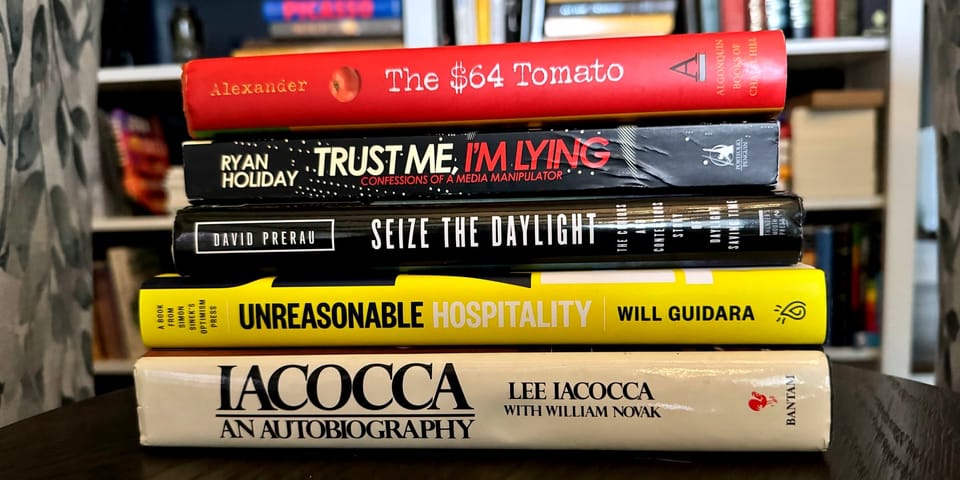
• The $64 Tomato
• Unreasonable Hospitality
• Iacocca: An Autobiography
• Trust Me, I’m Lying
• Seize The Daylight
Hands down, “What are you reading?” is the most common question among my friends and colleagues. “Tell me what books are on your coffee table” was one of my standard interview questions for a long time. Of course, the flaw with this question is that it attempts to solicit an endorsement before the reader finished and had time to digest the content of the current book – resulting in a half-assed recommendation that perpetuates bad books and erodes the recommender’s credibility.
“If you see a book you want, just buy it. Don’t worry about the price. If a book sucks, stop reading it. Life is too short to read books you don’t enjoy reading.”
Ryan Holiday, These 38 Reading Rules Changed My Life
Following Holiday’s advice, I’ve changed how I approach reading. I buy a lot of books. I start more than I finish. Of the ones I finish, I’m interested in re-reading well less than half of them. I sell some back to Half Price Books at pennies on the dollar, so I can further feed my addiction by buying someone else’s discards (where I still can’t decide if the self-help section of a used bookstore is depressing or inspiring.)
I don’t set Goodreads goals for a specific number of books to read in a year (and never will); although I applaud those who do. Just counting the number of books I have completed in a given year is a poor reflection of what I truly read. Sometimes I skim. Sometimes I skip chapters. And sometimes I re-read a passage months or years later with different eyes and different context – learning a new and different lesson from the same unchanged words.
As the ancient Greek philosopher Heraclitus observed,“You can’t step in the same river twice, for it is not the same river and you are not the same man.” We can never read the same book twice. Revisiting a book helps you reflect on how you’ve changed. Every book I read is an opportunity to improve, enhance, or change something about my thoughts or behavior.
I dislike hyperbole. When the significance of something is so obviously over-exaggerated to emphasize importance, I question the source and judge the endorsement. You know how it goes:
“This is literally the best sandwich I’ve ever eaten”
“That’s the funniest joke of all time”.
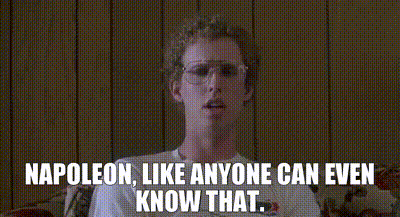
It’s perfectly OK to just label something as “a favorite thing” or “a popular choice.”
I do, however, really enjoy ranking things. Any structured ranking method inherently defeats hyperbole with real quantitative proof that something is now the best, the most, or the greatest of all time. But ranking requires criteria that provoke intentional thought, and direct comparison. It should surprise no one that I created a spreadsheet and have done just that to create a ranked, evergreen, and fluid list of “the greatest books I’ve ever read.”
If I only focused on the quantitative side of my rankings, then the unquantifiable and, occasionally, irrational criteria are lost. That emotional feeling you get when reading, positive, negative, disgusted, or thoughtful, is hard to measure accurately but just as important. Here are some of my unquantifiable and irrational criteria:
- On the first read, does the book instill a feeling of FOMO whenever I’m not reading it? Is there an inescapable draw to start the next chapter, despite the heaviest of eyes at 1 AM? Do I have an unconscious, uncontrollable, inability to set it down once I’ve started?
- How strong of an impression did this book make on me? Are the core ideals, quotes, or visuals permanently imprinted into my brain?
- How often do I think about this book? Do I pick it up as a reference document to solve problems or guide me? Can I quote a passage? How frequently am I telling others about a lesson learned from this book? Like that pop song that gets stuck in your head.
- Does it stand the test of time or is the message lost as the world evolves? Could the intent be as important 50 years ago as it will be in the next 50?
Because a handful of books have become so important to me, I choose to recommend them… but not blindly. Just like the book itself must match each person’s current situation and circumstance, a recommendation must come at the right time and be pitched with the proper enthusiasm. The timeliness of when a book surfaces – or resurfaces – in our lives can make or break its appeal. I don’t use the phrase “life-changing” lightly. Each book was pivotal in how I perceive and react to the world. They have changed the course of my daily life.
Reader beware, how they shaped me may not be how they impact you.
The $64 Tomato
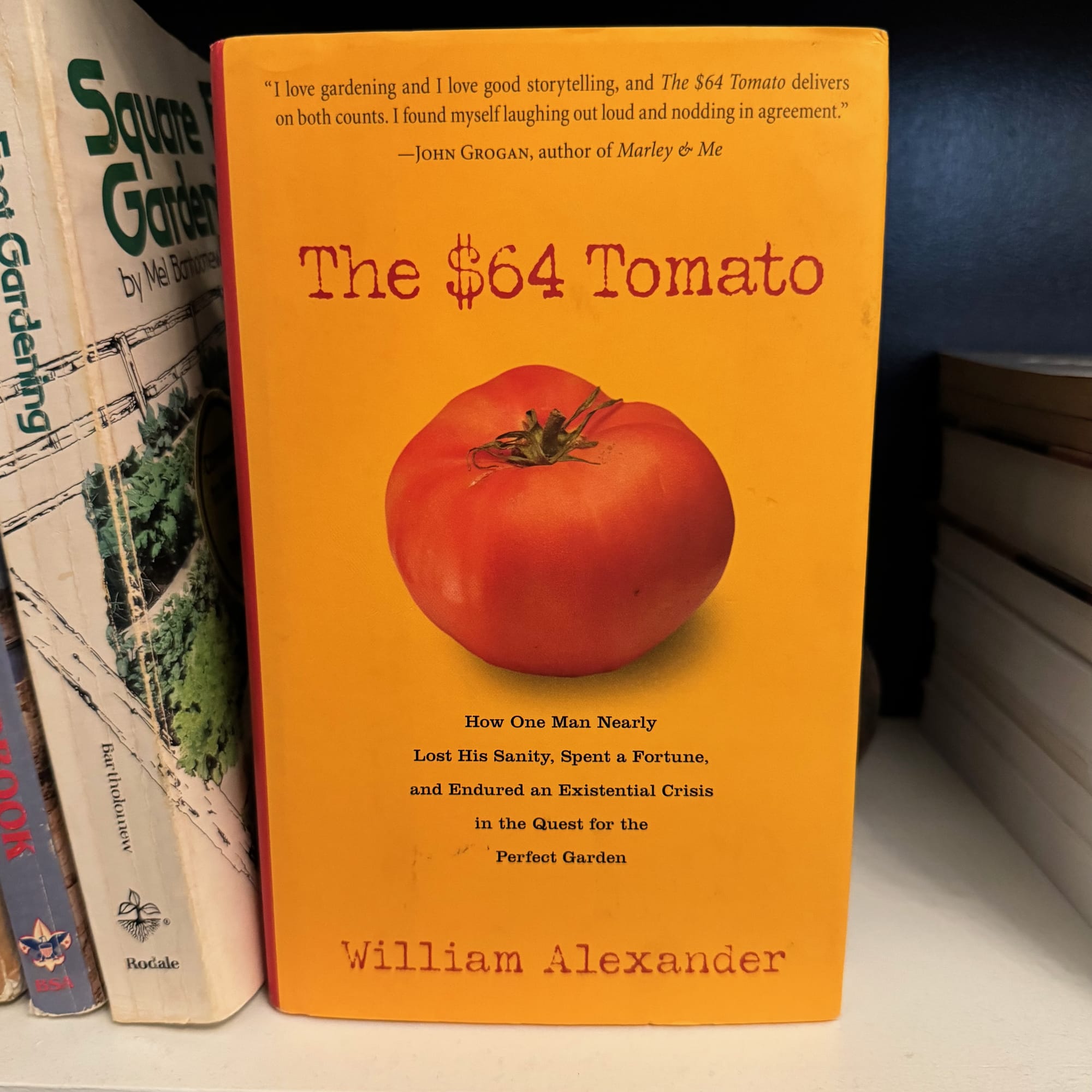
In 2009, my garden aspirations were sky high with visions of Instagram-worthy raised beds, vibrant rows of flowers, an abundance of fresh vegetables, and leisurely Sunday afternoons devoted to tending it all. However, reality painted a different picture: a half-alive strawberry bush languished on my patio, its fruit pilfered by neighbor kids when they thought I wasn’t looking. Farm to Table was a challenge when most of my crop was dandelions. Lacking the know-how to transform scarcity into abundance, I embraced “The $64 Tomato” as my Mr. Miyagi.
William Alexander’s story is a coming of age for gardeners. Describing dirt under fingernails in Kafkaesque detail, with convictions only a horticulturalist could appreciate. After moving to a small rural town, he sets out to create a simple garden. And to grow some food for his family. While he endures eccentric contractors, invasive weeds, uncooperative weather, Superchuck the groundhog, meddling neighbors, and a debilitating physical diagnosis, he eventually finds success. Along the way are beautiful moments of deep thought on the relationship humans have forged with Mother Nature.
“Why does the groundhog have to take one bite from half a dozen tomatoes when any gardener would gladly grant him six bites of one.”
Of course, the culmination of his story is the profit and loss statement he meticulously lays out in the penultimate chapter. After amortizing hard costs over twenty years and deducting the loss suffered by Superchuck, he sheepishly delivers a final ledger to his wife. The book’s title is a massive spoiler. Nineteen Brandywine tomatoes harvested that season – yes, only 19 – had cost $64 each. Dumbfounded but still proud, Alexander rhetorically asks, “Was it worth it?”
I can’t be sure I became a better gardener by reading this. I did become more comfortable dealing with roadblocks and less concerned with superficial blemishes; on tomatoes, at work, and with people. The thought of paying $64 cash for a single tomato is a reminder that tracking metrics can sometimes cloud our judgment.
That $64 bought a summer of sunshine, exercise, fellowship, dirt under fingernails, and purpose. The ad campaign that had a terrible clickthrough rate but won awards? The newest branded apparel item everyone wants that cost twice as much because it’s “Made in America and 100% Cotton”? Were they worth it? I’d buy them all again any day.
“it’s not about what it actually costs to eat this piece of fruit. It’s really about lifestyle.”
William Alexander, NPR Morning Edition
In hindsight, I see The $64 Tomato as almost indistinguishable from The Subtle Art of Not Giving a F*ck. Both books are dirty; only one is vulgar. Both insist we give our precious attention to the things that matter, regardless of how frivolous the time, effort, or cost might appear.
Because when it’s all over, I hope to say it was worth it.
Unreasonable Hospitality
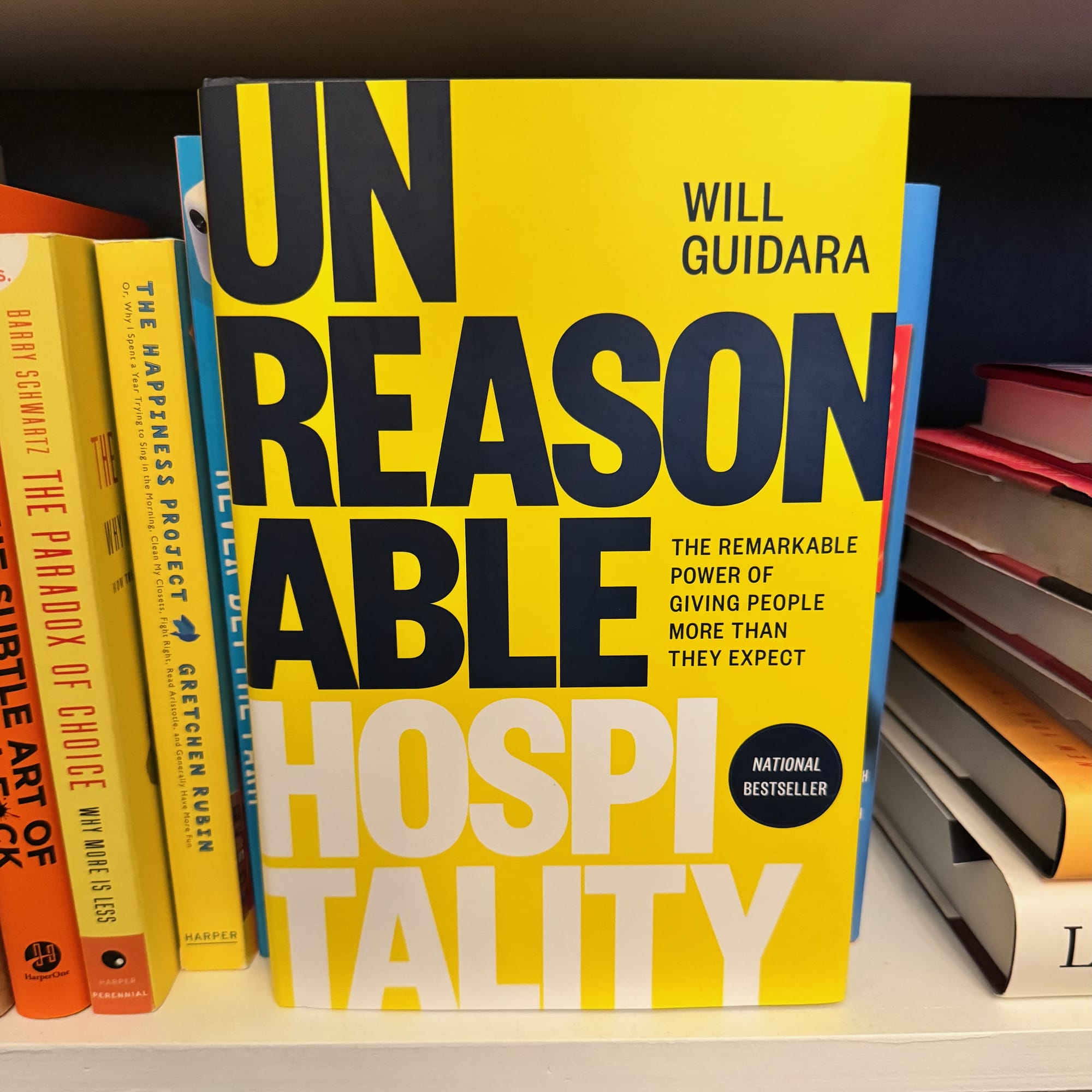
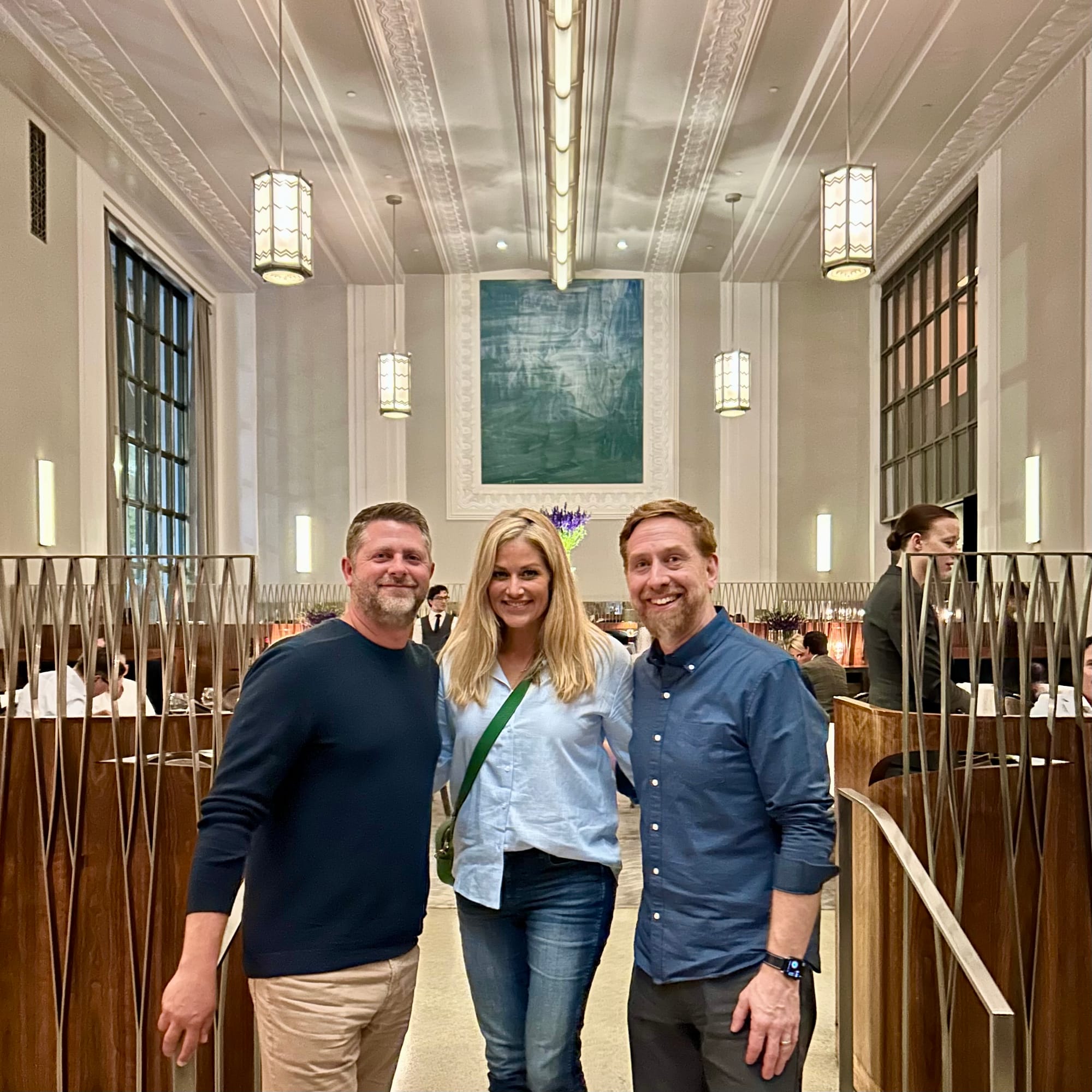
The book and the dinner
I completely missed the “Unreasonable Hospitality” craze on this one in 2022. So when a friend invited me to dinner at Eleven Madison Park (EMP) in New York City the following summer, I was clueless about the people, the food, or the service.
Foolishly, I had only Googled walking directions ahead of time. Stepping into the grand marble lobby and being unexpectedly greeted by name (a trick I’d learn all about later), I sensed this experience would be different.
What followed was a meal against which I’ll compare all others. By this point, EMP was firmly in its plant-based dining experience era. Because I hadn’t read the book, watched the Netflix show, or even checked Instagram, it was like watching Planet of the Apes for the first time. Enjoying everything spoiler-free gave me the gift of a jaw-dropping, awe-inspiring, humbling four hour dinner adventure.
Three days later, the iconic book arrived on my doorstep. I was so eager to pair a story with my experience, it became one of the few books I purchased brand new (sorry Half Price Books). Unwrapped, I devoured the entire book in only a few hours more than it took for my entire meal. Like painting the Golden Gate Bridge, I turned around after my first read and read it again.
My most profound lesson learned is that pure, unbridled, obsession with details can change the world. The author and restauranteur, Will Guidara baked this obsession into Eleven Madison Park’s DNA. Often, when striving for perfection, progress is paralyzed. Guidara set a high bar, one almost indistinguishable from perfection.
In simple terms, perfection was just hundreds and thousands of small, inconsequential, and nearly imperceptible details. Each designed with a purpose, coordinated among the team, and orchestrated into a glorious dance. Practiced and rehearsed over and over and over again.
Like The Beatles playing eight hour shows of cover songs in Hamburg bars to hone their skills. All together, hyper-focus on the controllable parts culminated in a version of perfection as they achieved the coveted #1 restaurant in the world.
“Intention means every decision, from the most obviously significant to the seemingly mundane, matters. The way you do one thing is the way you do everything.”
As the newness of the book and the experience wears off, I recall chapters of the book as fondly as I do the food and conversation of that evening. Guidara’s philosophy on service is as stunning as the marble lobby.
In a world where competition in every discipline has never been stronger, I believe the most reasonable way to find excellence is to be wildly unreasonable.
Iacocca: An Autobiography
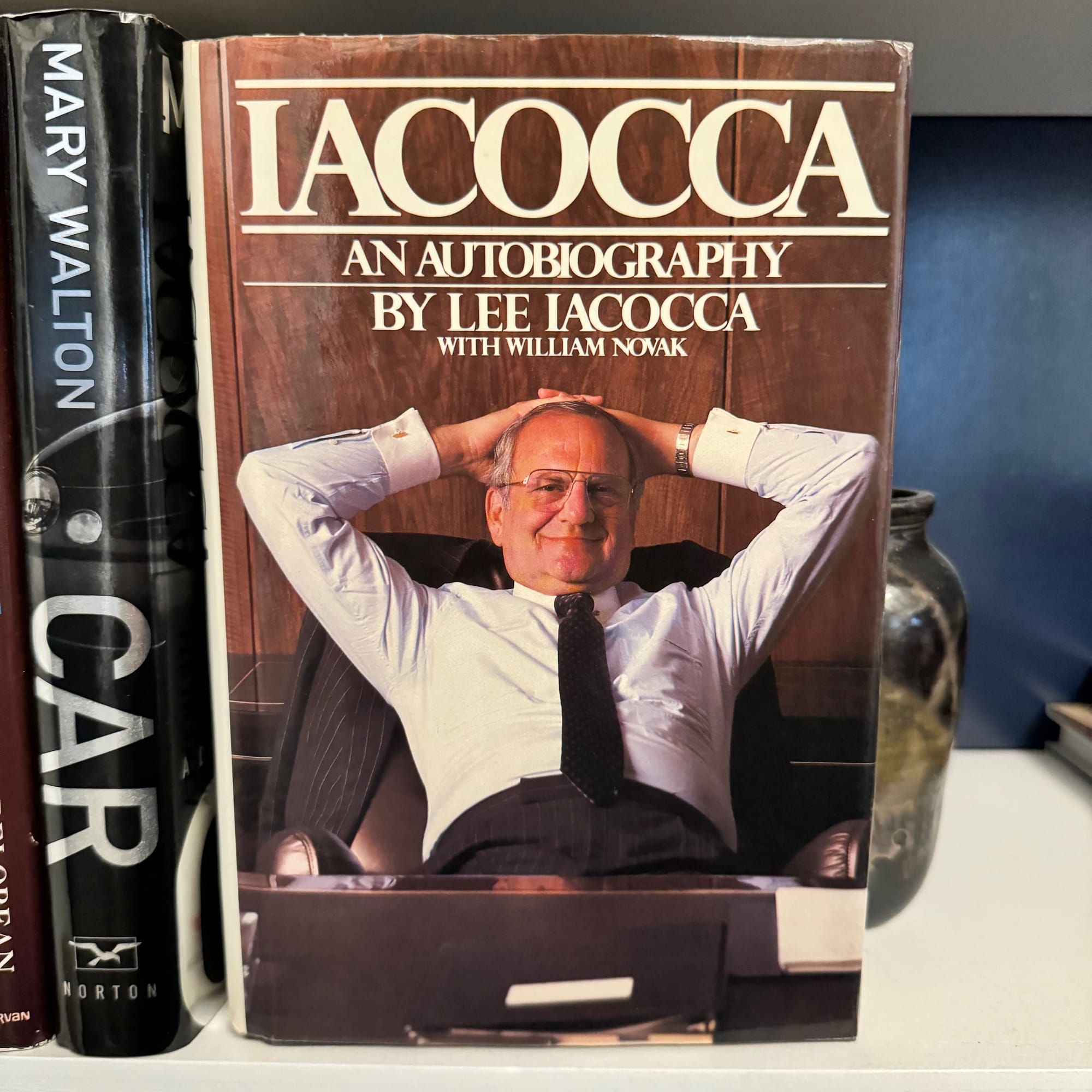
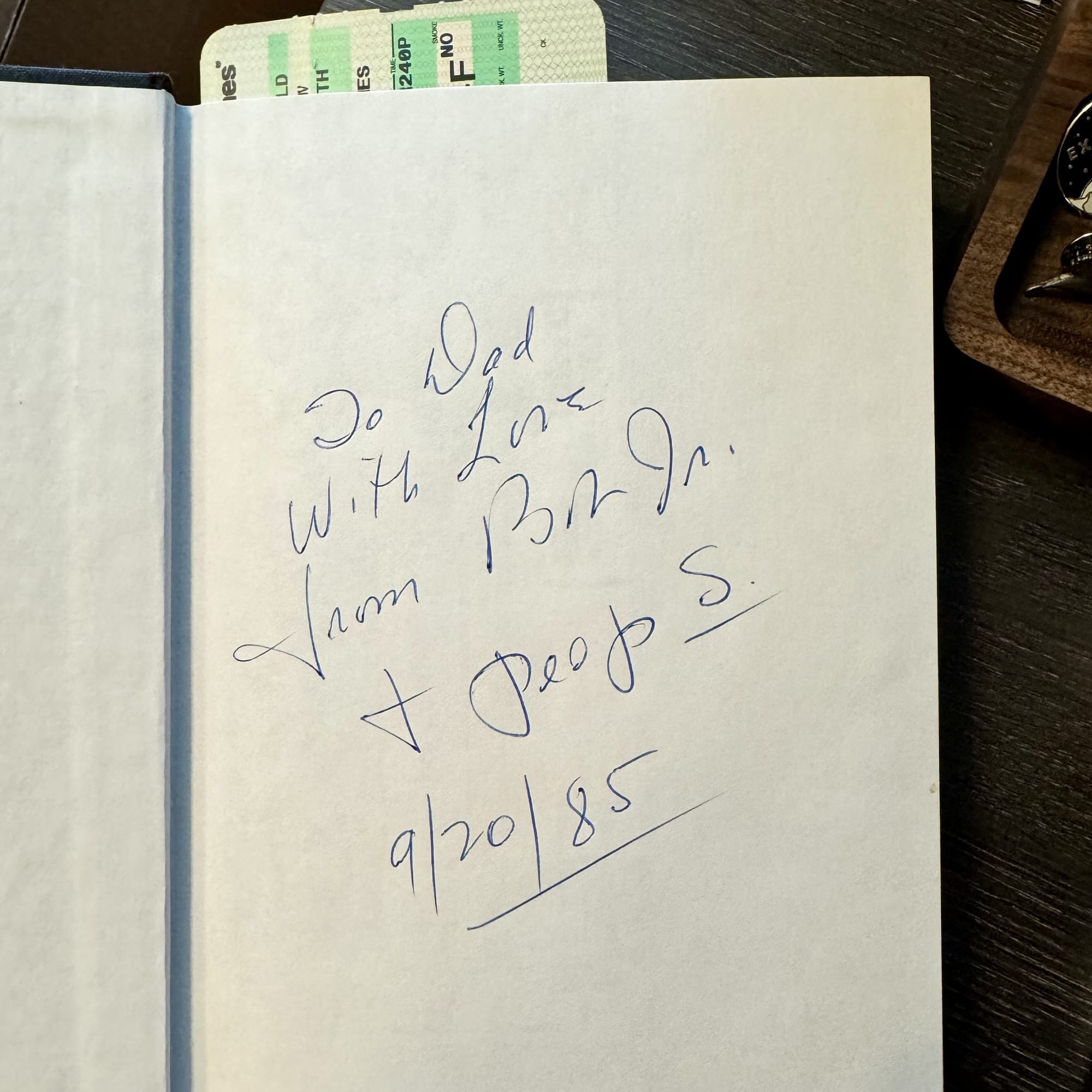
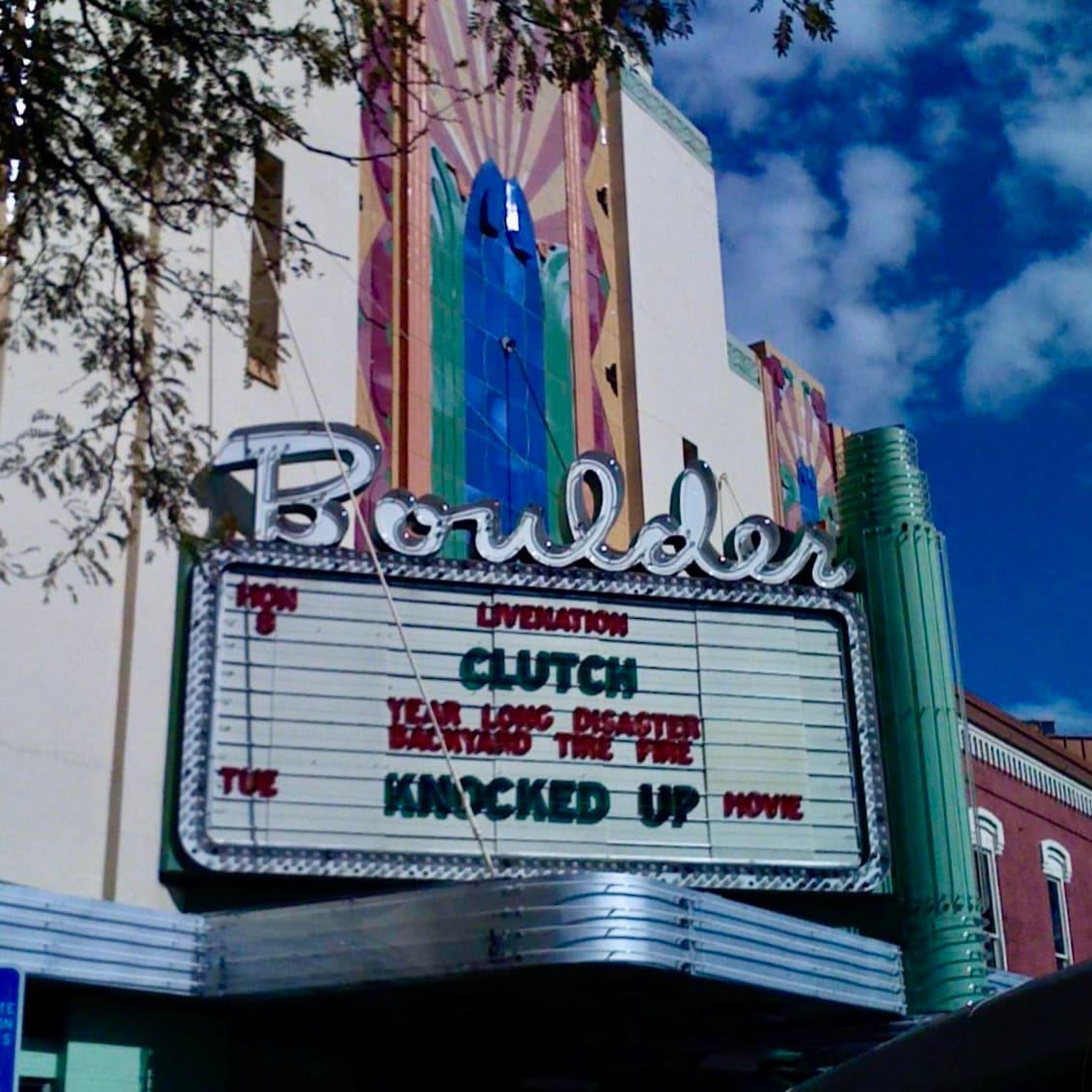
Rock and Roll and Reading
Attempting to recall memories is a humbling mental exercise. Only with the help of an American Airlines boarding pass bookmark do I know I read this book from the comfort of a flight from Columbus, OH to Denver, CO in 2007. I have no recollection of how I ended up with this particular used copy, which includes an inscription to someone else’s dad in 1985. Yet, I vividly remember retelling stories from this book in the backstage green room of the Boulder Theater.
Like any good autobiography, which carries an obvious dose of ego, I approach with two balanced perspectives. First, a healthy sense of skepticism for the author’s ability to recall people, places, topics, decisions, and quotes. Second, a deep admiration for what was undoubtedly a meticulous note taking endeavor. As a saved airline ticket and scroll through my iPhone camera roll allow me to time travel, autobiographers rely on memos, calendars, agendas, press releases, and meeting notes to capture their story.
In this memoir, Iacocca chronicles his meteoric rise to “single-handedly saving Chrysler from certain death” in 1984 by creating the K-car platform. Rather than maintain a vast number of parts in inventory, Iacocca engineered a Mr. Potato Head-style platform where various parts and pieces, like body panels and suspensions, could be interchanged.
The K-car platform was “stretched, smoothed, poked, chopped and trimmed to create almost a dozen different models” to create cars like the Dodge 400 and Daytona, Chrysler LeBaron and Executive limousine, Plymouth Duster and Reliant, and the minivan trifecta of Dodge Caravan, Plymouth Voyager, and Chrysler Town and Country. Consumers viewed all these cars as different and distinct. Iacocca saw a single manufacturing supply chain with common parts. Working at scale allowed Chrysler to sell over 2 million vehicles in less than a decade, propelling them to profitability Wall Street once thought impossible.
But the stroke of genius I’ve retold in green rooms, on tour buses, from the stage, and in conference rooms wasn’t the platform. As revolutionary as that is. It was Iacocca’s keen eye for scale beyond just one car. Something only visible when cars lined up for shipping by the thousands and every penny mattered.
“We deliberately kept [the K-car] under 176 inches long so that we could fit more of them on a standard freight car.”
This book taught me working at a large scale is just another medium for a creator to play with. Like an artist who understands the nuances of mixing oil paints versus watercolor, creating things that work at scale is a healthy and inspiring constraint. Making 1 is easy. Making 10 is hard on the hands. But making 100,000 is hard on the brain, using a completely set of strategies and skills.
Marketers can ideate incredible, elaborate, fabulous campaigns for a single product. Or run a lucrative ad on a single social channel. World-class marketers know how to maintain graphic continuity across digital, traditional, and point-of-sale channels. They create a brand voice that is so consistent and identifiable, you’d never know which one of the dozen copywriters on the team penned it. These marketers understand process is just as important as color palette. And to spend fewer clicks creating one ad means they can make more ads.
The story of the guy who shaved an inch off the K-car to save on shipping comes in handy when I’m tasked with marketing 10,000 homes.
Trust Me, I’m Lying
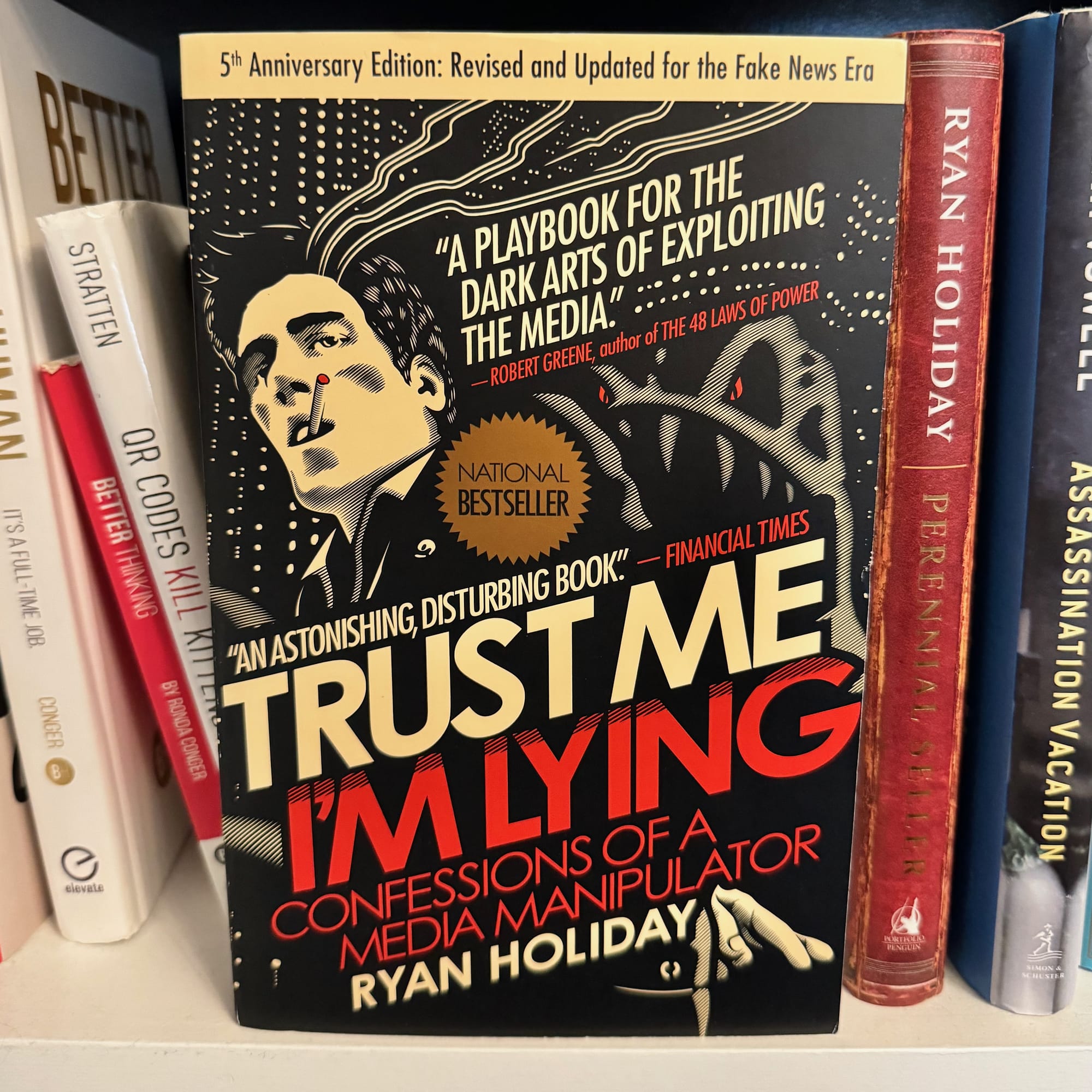
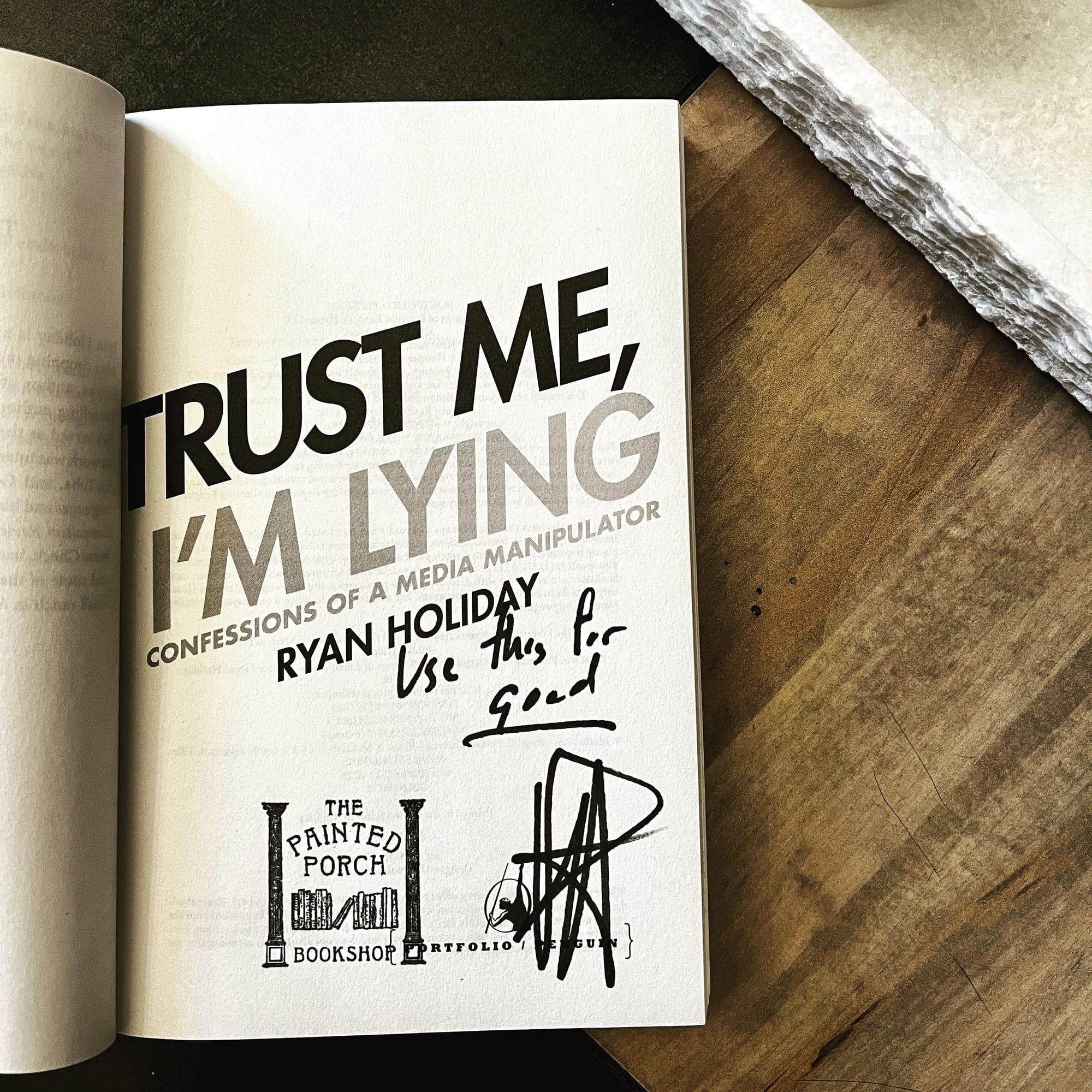
Like Spiderman, "with great power comes great responsibility."
I’ve lived most of my life as a pessimistic, cynical, skeptical, and suspicious person. I’d be most likely to be voted most likely to throw the baby out with the bath water, if such a silly award existed. An important person in my life often reminds me it takes constant self-work to change that mindset.
Acknowledging those negative traits and channeling energy into happiness, positivity, and optimism is hard work. At first read, this book directly conflicts with that hard work. It feeds every conspiracy theory-driven idea that the world is a terrible place. That politicians and corporations are conspiring against the people. That the nice guy or gal will finish last. And en masse, we are probably all lemmings.
Media manipulation has been influencing sentiment and opinion with messaging since clay tablets. The author lays out tactics he used to exploit journalism and generate publicity for his clients in this book. What I thought I knew about clickbait culture, newsjacking, thumbnail cheating, letters to the editor, and crowdsourced blogs pales compared to Holiday’s mastery of these skills.
The messaging and positioning of ideas for mass consumption are architected so people believe certain things or feel a certain way. This book forced me to acknowledge some opinions I thought I had, weren’t my original thoughts at all. Witnessing a marketer’s diabolical and Mephistophelian acts is a sure fire way to build up a defense system. Like cybersecurity companies hiring reformed hackers.
To overcome misinformation, the public must strive not just to think things but to knowing things. When an idea might not be your own, rely on fundamental facts over conjecture. And be skilled enough to identify the difference.
“Use this for good”
My deepest learning came on subsequent reads; paired with the personal inscription from Ryan. The power of the book completely shifted. I saw a very proverbial light. “Use this for good”. Wow, such a simple directive. All of the crafty, cunning, link-building tricks to push an article to the top of Google? Backroom scheming, clandestine emails, and covert guerrilla marketing stunts? They all take on a new meaning when I hear Ryan whispering in my ear, “Use this for good”.
Innovation will forever teeter between good and evil. A tool for creating opportunity or being weaponized to destroy. Yesterday, cocaine was in Coca-Cola, then sugar, and now High Fructose Corn Syrup. Today AI promises to construct utopia but it might eliminate our jobs. Tomorrow, I am certain history will repeat itself. “Meet the new boss, same as the old boss.” The tug-of-war continues.
When the forces of good and evil have the same tools and equal opportunity, society decides who wins. If you don’t read this book to go do these things, read it to understand what others are doing to you. And then “use this for good.”
Seize The Daylight
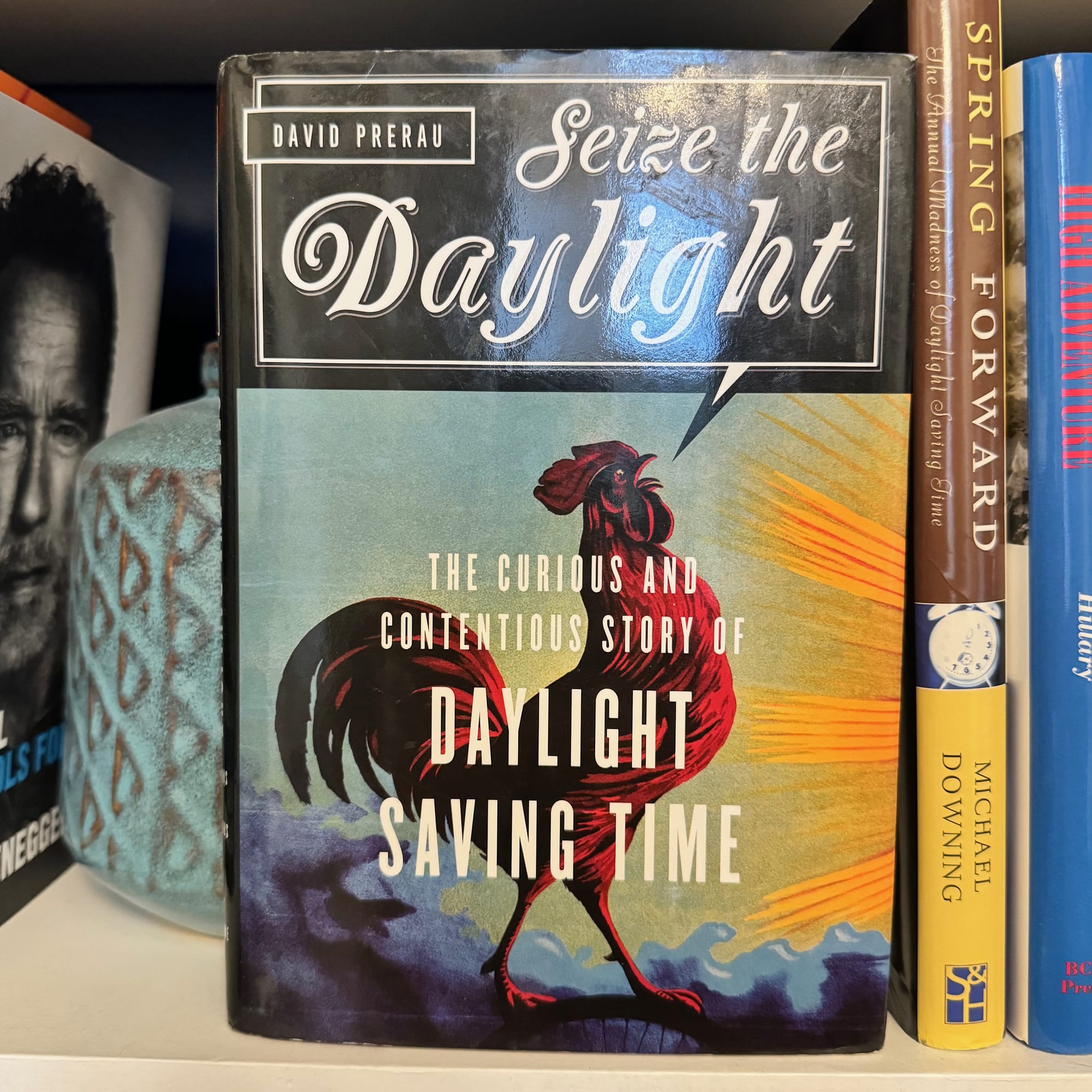

"Ticking away the moments that make up a dull day..."
I’m a bit obsessed by the passage of time, the speed at which time moves, and how our perception of it changes as we age. Time travel movies are my (not so guilty) guilty pleasure. I share a strange fascination with our place in time with John Mayer, who emblazoned 10:38 AM on the cover of his “Born and Raised” album as a dot along his timeline.
Expanding John’s analogy, an average American graduates high school at 5:37 AM, gets married around 9:15 AM, and retires by 7 PM. I first read this book at 11:08 AM and again at Noon. As I write this, it’s 2:01 PM.
Acknowledging and understanding my place in time is motivating, intimidating, humbling, and inspiring. Viewing life through this lens makes the actual minutes and days a bit more important. And the value of “an extra hour,” as daylight saving promises, is much more precious.
All of which should make “Seize The Daylight” an obvious addition to my list. It’s packed full of stories, anecdotes, cartoons, and of course, Jeopardy-worthy trivia:
- The first daylight saving advocacy group in the United States was founded in Cincinnati, Ohio.
- Detroit and Cleveland lead the initiative to push the Eastern Time Zone line westward. With baseball icon Ty Cobb being one of the loudest proponents. Naturally, because you can play more baseball with more daylight in the evenings.
- Car accidents increase by 16% for a week after the spring Daylight Saving transition.
- Daylight Saving Time has reversed birth order in twins and triplets.
While the author focuses mainly on the impact of time zones and daylight saving on trains, farms, war, businesses, health, and more; it briefly ponders the very existence of time. Like gravity, it’s a constant force pushing and pulling on us. Did we invent time, or did we discover it? Maybe neither, and it’s an illusion that we just observe. As humans tend to do with anything in abundance; we kill it, waste it, and let it slip away.
Sometimes it doesn’t ”fly by and we’re paralyzed by it”. Yet, when it’s scarce, we pine for it – longing to bottle it up for later. Searching for more with life hacks, outsourcing chores, and automation, all in the name of recovering those precious minutes. But for what, an extra 15 minutes on Facebook? It seems most people – myself included – just aren’t very good at using time.
“And the best of all ways
To lengthen our days
Is to steal a few hours from the night”
Thomas Moore, “The Young May Moon“
This book reminds me that time is as constant as gravity. It will progress no matter how hard humans try to manipulate it, move it, or rename it.
Ultimately, “Your future hasn’t been written yet. No one’s has. Your future is whatever you make it. So make it a good one.”